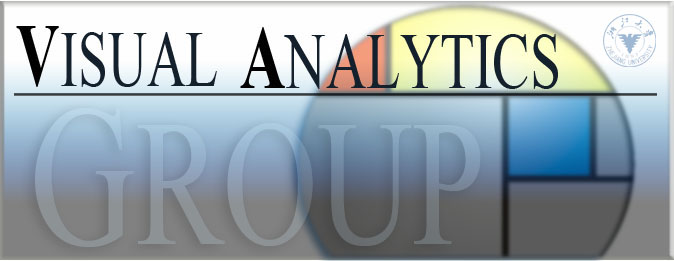Selected Publications
(Selected papers/talks can be downloaded from My Favorite/By years/Talks webpages)
A Novel Unified Variational Image Editing Model
Xiang Zeng , Wei Chen, Qunsheng Peng
In Proceedings of Pacific Graphics 2005
In this paper we propose a unified variational image editing model. It interprets image editing as a variational problem concerning the adaptive adjustments to the zeroand first-derivatives of the images which correspond to the color and gradient items. By varying the definition domain of each of the two items as well as applying diverse operators, the new model is capable of tackling a variety of image editing tasks. It achieves visually better seamless image cloning effects than existing approaches. It also induces a new and efficient solution to adjusting the color of an image interactively and locally. Other image editing tasks such as stylized processing, local illumination enhancement and image sharpening, can be accomplished within the unified variational framework. Experimental results verify the high flexibility and efficiency of the proposed model.
pdf
|
| |
Simultaneous Segmentation and Motion Recovery in 3D Cardiac Image Analysis
Ling Zhuang, Huafeng Liu, Wei Chen, Hujun Bao, Pengcheng Shi
ICCV 2005 Workshop: Computer Vision for Biomedical Image Applications
pdf
|
| |
Layer-based Surface Editting
Dong Xu, Wei Chen and Hujun Bao
Third Eurographics Symposium on Geometry Processing (SGP), 2005. (Poster)
By decomposing a surface into a sequence of levels with different frequency bands, users can manipulate and modify specified levels without affecting others. This idea has been extensively explored with various multi-resolution techniques [KVS99, GSS99]. However, encoding details as local frame displacements, as widely done in multi-resolution techniques, causes two major problems. First, the individually recorded local frame displacements may cause the reconstruction from a base surface that has been performed a large-scale deformation unstable. Inserting intermediate levels only alleviates this problem. Second, since local frame displacements are recorded under a given surface scale, they do not adapt to arbitrary surface scaling. Recent differential domain methods [YZX*04, SLCO*04] achieve detailpreserving editing results by optimizing properly-adjusted differential properties. The least-squares minimization reconstruction scheme distributes errors across the whole domain and favors appealing results. However, incorporating differential properties into a hierarchical structure has not been explored.
pdf
|
| |
Curve Reconstruction Based on Interval B-spline Curve
Hongwei Lin, Wei Chen and Guojin Wang
The Visual Computer, Volume 21, Number 6, July 2005. pp.418 - 427
Curve reconstruction that generates a piece of centric curve from a piece of planar stripshaped point cloud is a fundamental problem in reverse engineering. In this paper, we present a new curvereconstruction algorithm based on an interval B-spline curve. The algorithm constructs a rectangle sequence approximating the point cloud using a new data clustering technique, which facilitates the determination of curve order implied in the shape of the point cloud. A quasicentric point sequence and two pieces of boundary point sequences are then computed, based on which a piece of interval B-spline curve representing the geometric shape of the point cloud is constructed. Its centric curve is the final reconstructed curve. The whole algorithm is intuitive, simple, and efficient, as demonstrated by experimental results.
pdf
|
| |
|

